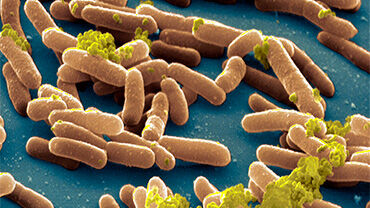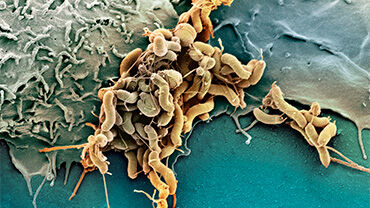Campylobacter and Salmonella cases stable in the EU
The number of reported human cases of illness caused by Campylobacter and Salmonella bacteria across Europe appears to be have stabilised over the past five years, according to the latest report on zoonotic diseases by the European Food Safety Authority (EFSA) and the European Centre for Disease Prevention and Control (ECDC).
Campylobacteriosis, which has been the most reported gastrointestinal disease in the EU since 2005, affected over 220 000 people in 2019. Salmonellosis was the second most reported zoonotic disease in the EU, affecting around 88 000 people.
Of the 66 113 samples of ready-to-eat foods – foods that do not need to be cooked prior consumption – 0.3% tested positive for Salmonella. Of the 191 181 non-ready-to-eat samples, 1.5% were positive. Eighteen of the 26 Member States reporting on Salmonella control programmes in poultry populations met all the reduction targets, compared to 14 in 2018.
The next most reported diseases were Shiga toxin-producing Escherichia coli (STEC) infections, yersiniosis and listeriosis. The trend of confirmed human cases of listeriosis was stable between 2015 and 2019, after a long period of increase. There were 2 621 cases reported in 2019, mainly affecting people over 64 years old. It was the most severe zoonotic disease, with high rates of hospitalisation (92%) and fatality (17.6%).
The report also analyses the cause of foodborne disease outbreaks, events during which at least two people contract the same illness from the same contaminated food. Salmonella remained the most frequently detected agent and caused 926 outbreaks, but the number of outbreaks due to S. Enteritidis decreased. The most common sources of Salmonella outbreaks were eggs and egg products. Noroviruses in fish and fishery products caused the highest number (145) of outbreaks that have “strong evidence” implicating a food source.
A total of 5 175 foodborne outbreaks were reported in 2019, a decrease of 12.3% compared to 2018.
The report also includes data on Mycobacterium bovis/caprae, Brucella, Yersinia, Trichinella, Echinococcus, Toxoplasma gondii, rabies, Q fever, West Nile virus and tularaemia.
Read more
Surveillance report
The European Union One Health 2019 Zoonoses Report
This report of the EFSA and ECDC presents the results of zoonoses monitoring activities carried out in 2019 in 36 European countries (28 Member States (MS) and eight non-MS).








